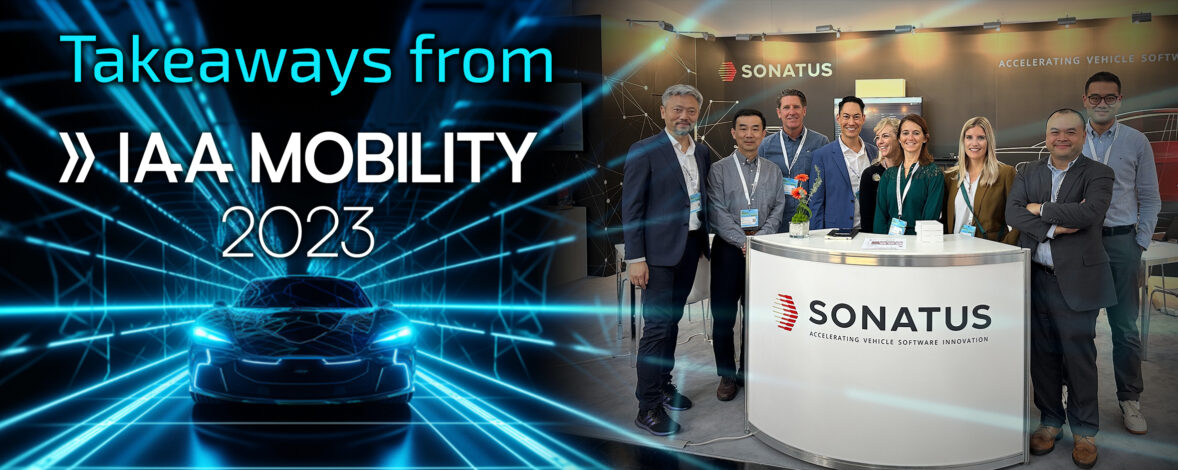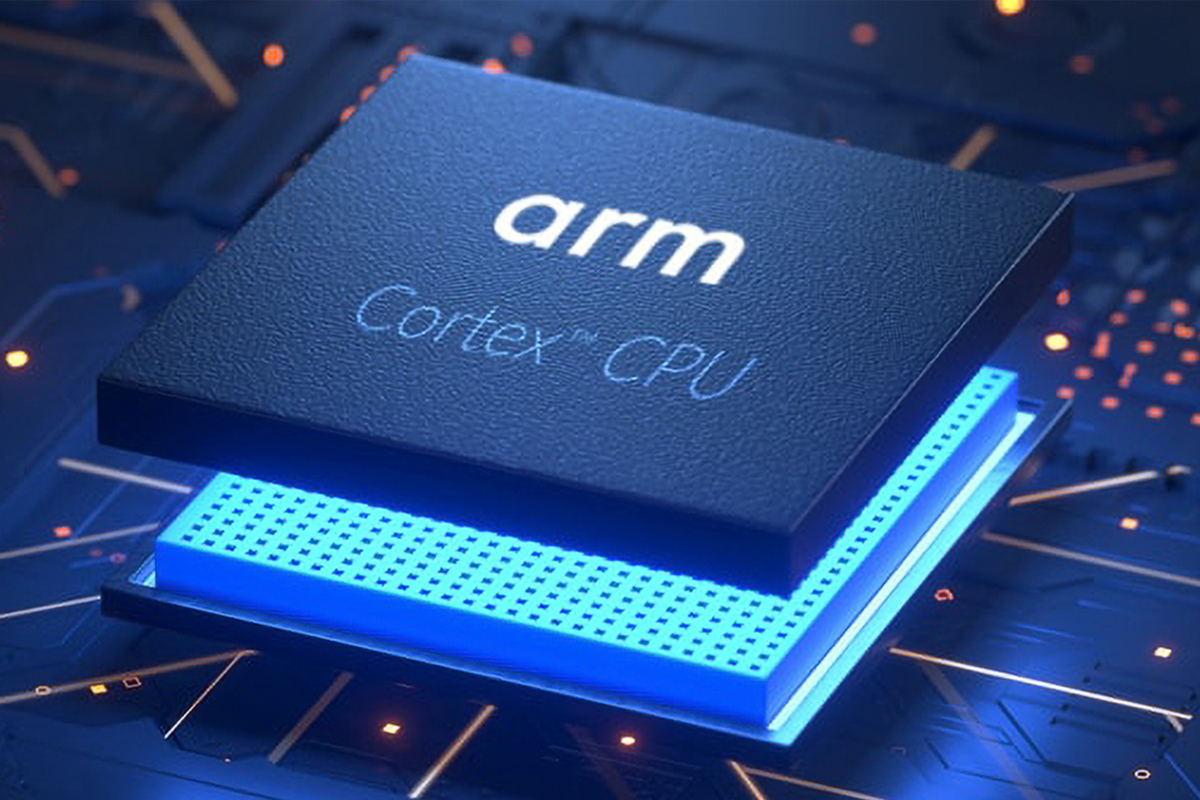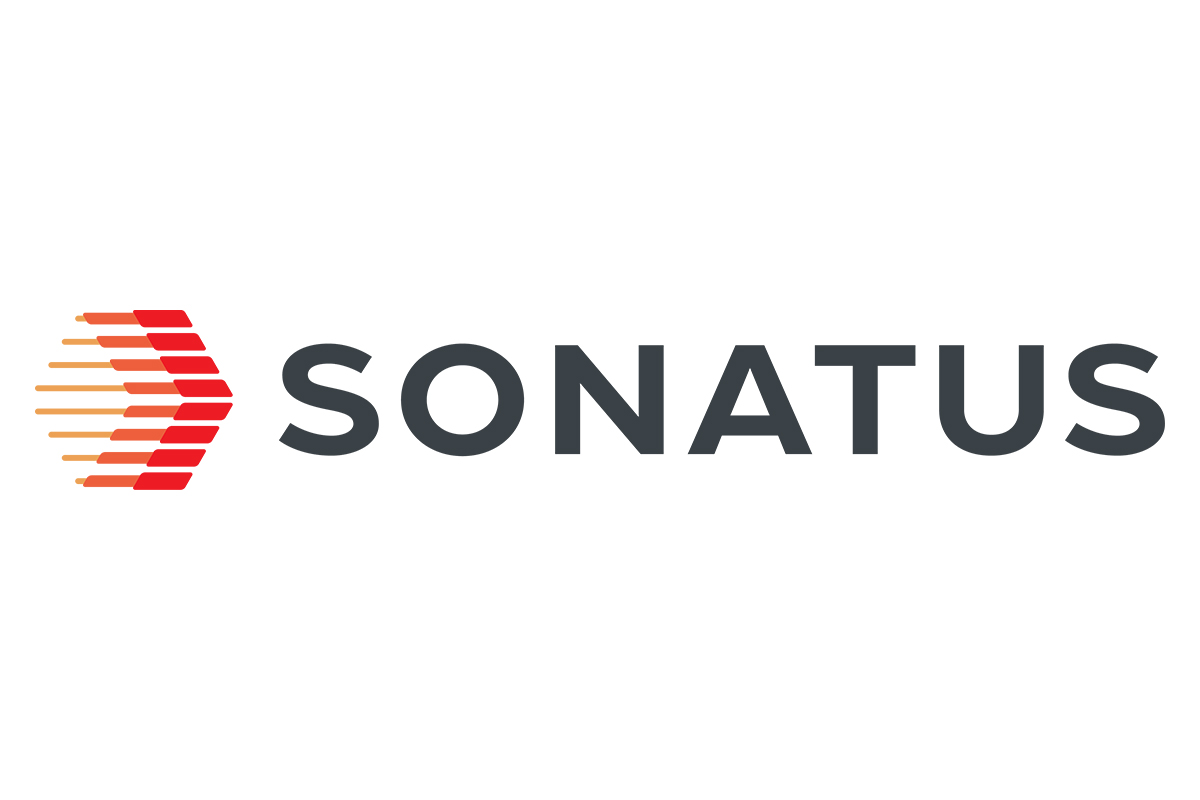This September 4-8, my colleagues and I were in Munich Germany, along with about 750 other automotive technology and mobility companies from 38 countries, to bring our value proposition to life at IAA Mobility 2023. Once called the Frankfurt Motor Show, IAA Mobility is now a bi-annual event that puts a bright spotlight on an industry in rapid transformation.
For Sonatus, the event was an ideal platform for connecting with many current and potential customers and partners from around the globe to discuss how our vehicle software solutions and collaborative approach can help solve some of the toughest technological challenges on the road to software-defined vehicles.
As much as it seemed the entire industry was in Munich that week, I know many did not have the opportunity to attend. I thought sharing a quick overview and recap of my top takeaways from the show would be useful.
Breakdown of the different parts of IAA Mobility:
IAA Mobility fulfilled its role as a proper B2B and B2C mobility event with three major components:
- IAA Open Space (the B2C part of the event) transformed popular locations throughout the city into pop-up experiential centers for popular and emerging mobility brands alike- plus some great entertainment programming. Think of it as bringing the show to you and amping up the fun and engagement to spread the energy and excitement of new mobility throughout Munich and beyond. In my opinion, this is the part of the event that most held up to the event’s tagline, Experience Connected Mobility.
- IAA Conference (primarily B2B) was exactly what it sounds like. An impressive lineup of mobility thought leaders took the stage to share their perspectives on the top mobility trends and challenges. While the main stage was largely dominated by senior leaders from well-known companies such as BMW, Renault, AWS, and Qualcomm, other stages integrated into the exhibit halls provided a platform for many lesser-known, yet no less impactful speakers.
- IAA Summit (B2B) is essentially the exhibition featuring OEMs, suppliers, startups, government organizations, consortia, and the like, who are all playing roles in creating this new mobility ecosystem. So, while you got to see many of the most buzz-worthy car reveals like in traditional auto shows of the past, you were equally as likely to encounter enabling and complementing technologies, cute new EV city cars, and products that broaden the appeal of commuting on just two-wheels.
My top 3 trends:
The Summit is the main source of my observations as I spent the most time there.. This is not meant to be exhaustive, but rather a high-level look at what stood out most to me and colleagues.
- EVs for the masses: The automotive industry’s continued focus on electrification was on full display throughout the show. Even the biggest skeptics would be hard-pressed to call EVs just a trend anymore. Virtually all concepts and new model introductions were EVs and there was a very healthy showing of startup and mature companies exhibiting related technologies and services, particularly for new 800-volt electrical architectures, batteries, and charging. While none of this is surprising, what did stand out was a much greater focus on bringing more affordable and practical EVs to the market. This shift was true across the board but seemed the most pronounced by the significant presence of Chinese brand EVs—which is a perfect segue to my next takeaway.
- China is powerfully emerging as a global industry player: Strolling through the exhibit halls, it did not take me long to realize that China’s automotive industry is serious about greater expansion beyond its borders. 41% of the OEM exhibitors were from Asia, with China showing the largest representation. Similarly, Chinese suppliers also had a strong presence. The rapid shift to EVs and the need for more affordable options is creating a market need that the Chinese auto industry is quickly and effectively responding to. If seeing is believing, one would find it difficult not to acknowledge the impressive rate of progress Chinese auto companies are achieving and the competitiveness of many of the offerings on display throughout the exhibitions.
- The “screenification” and digitization of the cockpit continue: As automakers seek to reduce parts complexity and leverage more software-enabled features, the elimination of physical hard buttons in the cockpit is accelerating, particularly with premium and EV offerings. Meanwhile, the quantity, size, types, shapes, and quality of screens used in vehicles are increasing. Further, display and glass advancements are making it more practical and appealing to leverage expanded glass surfaces in the cabin as 3D displays. Screens and displays are even making their way outside the vehicle for applications such as safety notifications.
Creating connected mobility: Key enablers
Although the IAA Mobility 2023 tagline was Experience Connected Mobility, I believe a slight modification would be even more fitting for the Summit: Create Connected Mobility. This notion of new/future mobility that is universally connected, smarter, more sustainable, and more accessible is still very much a work in progress – with many challenges ahead. While I am intentionally over-simplifying here, being at IAA underscored for me that there are two key ingredients to realize this exciting future and prosper in it.
- The first is collaboration. Taking a look at the diversity of exhibitors—long-standing giants in the industry, professional and financial services firms, software specialists (like Sonatus), government agencies, and start-up incubators among them—makes clear that this transformation can only reach its potential with extreme collaboration.
- The other key ingredient, of course, is software (and software-defined technologies) that will help create and manage the dynamic technological environments that future mobility demands. This is where Sonatus Vehicle Platform and its supported products can enable OEMs and their ecosystems drive this vehicle innovation with a dynamic software infrastructure and applications.
I commend the organizing body, the German Association of the Automotive Industry—or the VDA—for achieving what may be the most successful evolution of the “old school” global car show to a true new/future mobility show. I experienced a true blurring of the lines between auto (and other personal transportation) and tech.
Will this be the fate of other car shows going forward? From a B2B perspective, this is already starting to happen with varying degrees of success. Time will tell. But what is certain is that shows like IAA Mobility are both good and necessary to bring all of the players together to learn, collaborate, and challenge each other to create the exciting future of connected mobility.
Michael Cory,
Director of Marketing & Communications
Sonatus
contact@sonatus.com


